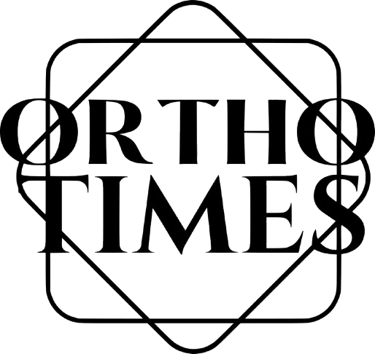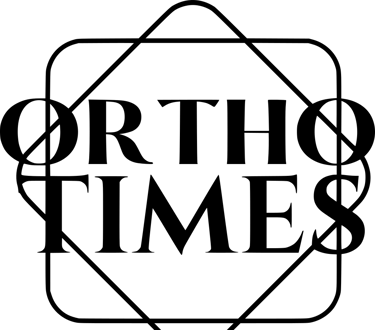F(Orth) - Twin block Notes
F(ORTH) REVISION NOTES
4/13/20256 min read
Why did you choose to treat the case with a functional appliance ?
Etiology - The Problem is skeletal
Component- the defective component is the mandible
Age- the patient is still growing and hes in a favorable stage of growth which is CVM stage 3
Severity- there is a significant skeletal discrepancy were Orthopeadic treatment could be beneficial ( we do not say that the patient is mild , moderate or severe class II because theres no classification for severity of class II)
What is meant by a functional appliance?
Its an appliance that uses masticatory and facial muscles to produce skeletal and dental effects
Why did you choose the twin block appliance specifically ?
Well the twin block appliance is the most widely used, it is Robust, cost effective , versatile and
what do you mean by versatile ?
It can be adapted to serve different functions in different situations
Can you give me examples of the twin block versatility ?
Expansion screw - in cases were expansion is going to be needed
Torque spurs -
Increasing the height of the blocks - in patients with an open bite
Connecting a High pull head gear - in patients with an open bite or maxillary excess
Z spings - Proclines centrals in cases of Class II div 2
Labial Bow - incase of Excessively proclined and spaced upper incisors
Please describe the Design of the Twin block your going to use.
(Start with describing the part of the designs which should be in every part of the design , then add to it any other component that would be useful to you in the case that was given to you, choose from the components we mentioned in the previous question)
Active component - 7mm Bite blocks
Retentive component - Adams Clasp in the upper 4s and 6s and lower 4s
Anchorage - from the bite blocks and baseplate
Baseplate - that connects all the parts of the twin block together
You can be asked why this design specifically, why 7mm height , why adams clasp etc. ?
This is according to O'briene design (the modified Twin block design), he used this design and it showed promising results
How do you know if the patient is going to need expansion ?
We test this while planning the case by simulating the forward movement of the mandible on the cast to check if theres going to be a cross bite in the future or not ?
What are the effects of the twin block ?
Skeletal - Maxillary restricion 0.9mm (Mills) / Mandibular enhancement average of 4.2mm (Mills) / Redirection of condylar growth mainly vertically (Mills)
Dental - upper incisor proclination 14 Degree (Harradine)/ Lower incisor4 +- 4 degree (Harradine) / Distallization of upper buccal segment / Mesiallization and eruption of lower buccal segment
Soft tissue - Improvement of soft tissue profile
Habit breaking effect
Improvement of airway
How stable is the Skeletal effects ?
Skeletal effects are lost (Tulloch)
Maxillary restraint is increased after treatment (Pancherz)
Why do we still use them in spite of the loss of skeletal effect ?
Because most effeects are dental anyway 73% and 28 % Skeletal according to Obriene
Improvement in self-esteem (O,Briene)
Twin block can improve overjet rapidly and efficiently
You mentioned that you used the CVM method to determine whether twin block treatment is appropriate. How accurate is this approach?
It is a fairly accurate method according to Sarah Hosni as it is coincident with the PHV , but its also useful to use other markers , like chronological age, physical age ,sexual age and dental age
Whats the best Age for using functional appliance treatment ?
Physical age= pubertal growth spurt (dibiase) /PHV (Baccetti)
Chronological age = Male 12-14yrs /female 10 -12 yrs (Mellion)
Dental age= Late mixed or early permanent
CVM = Stage 3 (Sara Hosni) (Baccetti)
Why would'nt you use a labial bow ?
The compliance without the labial bow is increased (Yaqoob)
Upper lip retract incisors (Clark)
Is it possible to do the treatment earlier ?
Yes it is possible and theres no difference in the outcome according to tulloch but its preferable to start it in the optimum time to reduce the treatment time and the patient would not lose interest in the treatment due to burn out
but it will be beneficial to do that if the patient is being bullies at school or if theres potential for trauma (Thiruvenkatachari)
whats the chance of trauma for a young patient with an increased overjet ?
45% of 10 yr olds with OJ more than 9m
and 23% of 10 yr olds with OJ less than 9mm
(Todd and Dodd)
Disadvantages of early treatment :
Shedding problems ,Mobilitiy of primary teeth, and shedding of primary teeth
Longer transitional period , therfore longer treatment time
increased risk of burnout
Less stability of results as maturation of lips do not occur until 14 years in females nd 18 years in males (Mamandras 1988)
Are there any advantages for the early treatment ?
Psychological Benefits - Increased self esteem (Obriene)
Reduces Risk of trauma
Better Compliance (Obriene)
What are the advantages and disadvantages of late treatment ?
Advantages:
Optimum time of mandibular growth
Short or no transitional period
Less Overall Treatment time
More stable Overjet (Lips almost Matured)
Disadvantages:
Less Compliance
More risk of incisal trauma at an early age
What Are the side effects of the twin block ?
Rebound of Overjet
Lateral open bite
Upper incisor exessive retroclination
Lower incisor exessive proclination
How do we counteract these Side effects ?
Methods that are common in fixing both , the problem of rebound of OJ and lateral open bite:
Use of Fixed appliance (MBT Brackets)
Early use of Class II Elastics
Steep and deep appliance
Night time wear of appliance
Specific to Rebound of OJ = Over correction
Specific to Lateral OB = Early trimming of the blocks , lower incisor capping
Excessive retroclination of upper incisors:
Use MBT brckets
Avoid class II Elastics
Excessive proclination of lower incisors:
Use of MBT Brackets
Ball ended clasps
How are you going to do the bite registration to fabricate the twin block?
Correct the right Bite fork
Select the 2mm (Blue) or 4mm (White) ProJet Bite fork, depending on the prescribed appliance
Usually, the 4mm white bite fork is suggested for a Sleep apnoea Device and open bite cases (increased mouth opening)
The bite fork has 2 sides upper and lower , the upper has 3 slots and the lower has a single slot
choose the appropriate slot for the patient in such a way that the patients protruds his mandible 70% of the way
once you established the appropriate groove , practice with the patient a couple of times to protrude his mandible at this position
once the patient has a good grasp of how to protrude his mandible
Using Wax-Soften a sheet of base plate wax in a hot water bath (160 Degrees) or Microwave heated water, Wrap each arm of the ProJet Bite with the softened wax, extending posteriorly beyond the fork end to achieve adequate support for laboratory articulation. Have the patient completely close into the wax and the upper and lower slots of the Projet Bite Fork, maintaining the proper midline position.
Why protrude the mandible only 70%?
Clark mentioned that the activation should not exceed 70% in order not to exceed the physiological limits
So now that you fabricated the Twin Block and you handed it to the patient , What instructions are you going to give him?
Wear the appliance for the whole day , remove it only while eating or playing sports
Gradual Wear of the appliance and use of calender to record worn hours (increases compliance)
Patient should be reviewed Bi monthly (handbook of orthodontics)
He can come for an appliance review after 1 week to check if he was able to wear the appliance and if theres any problems with the appliance
Is there a difference between full time and part time wear ?
According to the evidence No (Sharma)
Then why ask him to wear it 24 hours?
it is wise to always ask patients to wear them full time as patients will invariably wear a removable appliance for less time than prescribed (Al-Moghrabi et al, 2017).
Are you going to activate your twin block incrementally or a one step activation ?
According to the evidence theres no difference in the outcome between the two methods (Banks) but usually if my goals can not be met from one activation and there's still a significant overjet even after maximum advancement then will probably activate it in increments
What do you check in each visit ?
At each visit, the overjet and buccal segment relationship
should be recorded. In addition, the overjet
should also be recorded in maximum protrusion.
The difference between this and the overjet should
remain roughly the same, indicating that any overjet
reduction is physical as opposed to postural.
If you weren't seeing any results with the twin block , will you give up ? and when ?
I would first to try to identify the problem , if it was a problem of compliance or design , and try to fix it , if everything seems ok and no change of the overjet or buccal segments is seen within 6 months of the appliance being fitted, the treatment plan should be reviewed
When to decide its enough to use twin block ?
when the patient occludes edge to edge or even reverse overjet (Overcorrection)
Would you switch to the fixed appliance phase immediately or your going to have a transitional phase ?
Depends on the case :-
If the patient is still in the mixed dentition phase and early treatment has already been initiated, we will transition to a transitional phase typically using a twin block appliance worn part-time (nights only) or a steep and deep appliance—until the patient reaches permanent dentition.
However, if treatment began at the ideal time, during early permanent dentition, we can proceed directly to the fixed appliance phase without the need for an interim phase.
Is he going to need retention after finishing the fixed appliance treatment and if yes , how are you going to do that?
This depends on the age of the patient:
If the fixed appliance phase is completed after the patient has already passed their pubertal growth spurt, then retention may not be necessary.
However, if there is still remaining growth, it's best to retain the results until the patient has fully passed through the pubertal growth phase to maintain long-term stability.



